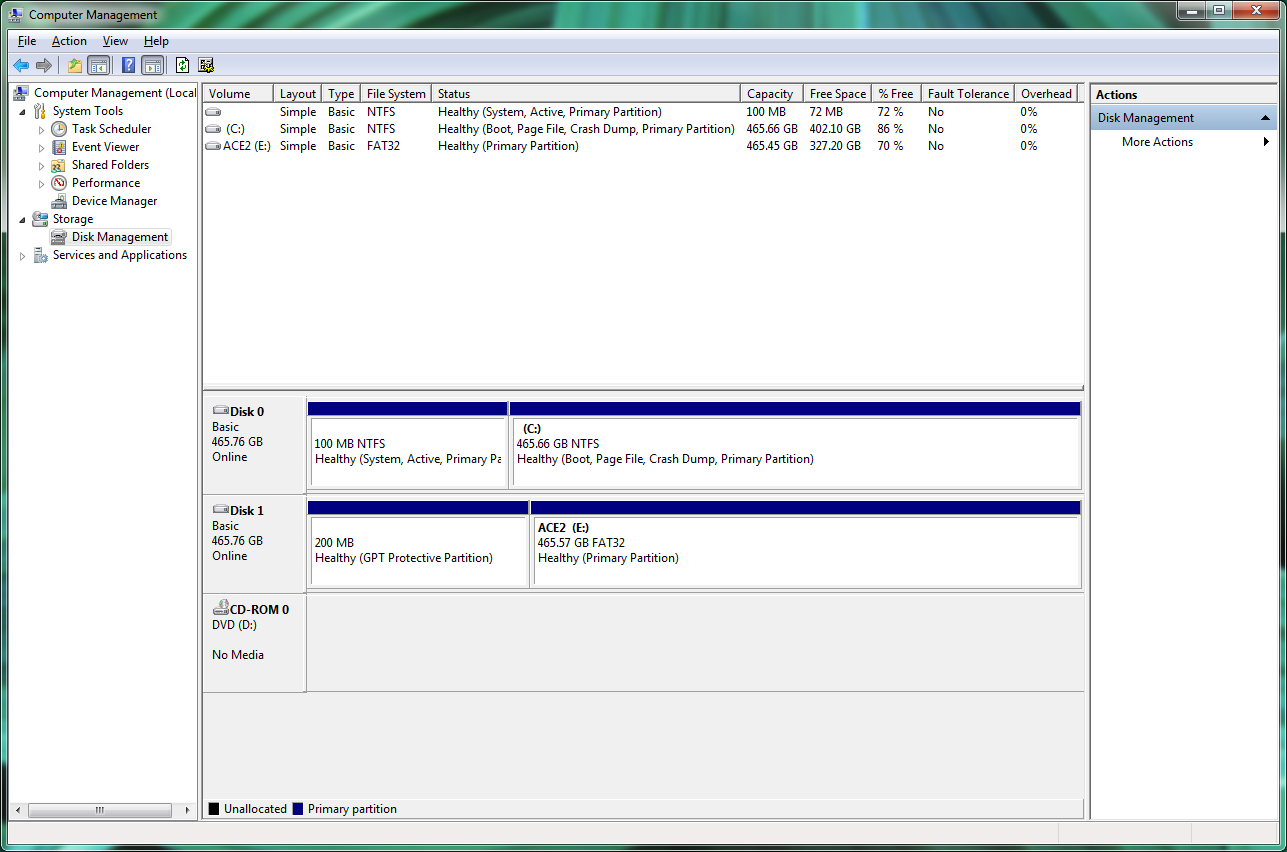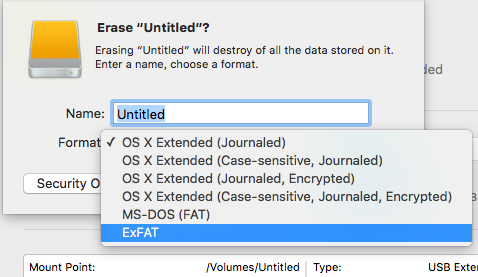

- #Get mac to read hd formatted for windows mac os x
- #Get mac to read hd formatted for windows Pc
- #Get mac to read hd formatted for windows windows
#Get mac to read hd formatted for windows windows
Your dad can check the format of his 4TB EHD by running Windows Explorer and selecting Computer in the left-hand pane.
#Get mac to read hd formatted for windows mac os x
Apple added read-only support for NTFS in 2003 with Mac OS X 10.3 (Panther) and many Mac users need it for running Windows under Boot Camp.
#Get mac to read hd formatted for windows Pc
Mac to PC file transfer using an ethernet cableĮven if the 4TB drive has been formatted in Windows’ NTFS (New Technology File System) format, then your Mac should still be able to read it, though it won’t be able to write to it. Apple already supported FAT32 and it added support for exFAT in Mac OS X 10.6.5 (Snow Leopard) and later versions of OS X.

All updated versions of Windows XP and later versions of Windows support both FAT32 and exFAT. If your dad’s new 4TB EHD (external hard drive) has been formatted in FAT32 or exFAT, then both his PC and your Mac should be able to read it. Hard drives will have to double in size another seven times to reach that. In theory, this can handle drives up to 64 zettabytes, though 512TB is the recommended maximum. However, hard drives keep getting bigger - now they are typically 500GB to 4TB - and in 2006, Microsoft released a new extended version, exFAT. In 1996, Microsoft introduced FAT32 to handle much larger hard drives, and FAT32 is still in common use. When DOS was born, popular hard drives only had 5MB or 10MB of storage space, which you could fill today with a single animated GIF. Most operating systems can read files in these old formats.

They tend to use a version of Microsoft’s FAT file format, which dates back to the MS DOS (or IBM PC DOS) operating system used by the IBM PC in 1981. Macs and Windows machines do have their own preferred file formats for internal hard drives, but external hard drives don’t always ship with these pre-installed. The hard drives should not be a problem, unless your computers are very old. However, my Mac doesn’t recognise his hard drive, and his PC won’t recognise my hard drive. I bought a 4TB hard drive for my dad, and thought it would be easy to copy the files over so he could use them on his PC. Hopefully you now know which options above to pick from the list of best formats for external hard drives, which can save your bacon when making the wrong choice can lead to a situation where an external disk just won’t plug-and-play.I have a Mac and an external hard drive that includes some important family files. Picking the wrong one can turn into a real pain when you have to backup and reformat an entire drive because it won’t work for its intended purpose. Picking a format for your external drive can be pretty confusing. In fact, most devices have an internal SD card formatting routine, so we recommend you simply let the intended device format the card. exFAT is still a good choice if your DSLR (for example) supports it, but follow the manufacturer’s recommendation. With SD cards, your choice should be entirely driven by which formats the devices you use support. However, that’s set to change in the future. Of course, if you’re also going to use your thumb drive on your current Linux machine, exFAT won’t work at the time of writing. Especially if you also want to use your thumb drive with iPads, iPhones and Macs.įAT32 is a fallback if you want to use your thumb drive with older devices that don’t support exFAT. Which means you may want to use large files, such as HD video files, on your thumb drive. With the fairly cheap yet large flash drives we have today, there’s some overlap in the use cases for thumb drives and external hard drives. SD cards and USB thumb drives are still an important part of our digital lives, so which formats should you pick? The choice for the best format for external hard drives involves different considerations compared to other forms of external storage. Unfortunately, Linux does not yet have support for exFAT, but that is reportedly set to change with the release of Kernel 5.4. The most compatible option is FAT32, but as we mentioned above it has a hard 4GB limit on file sizes. However, Linux supports NTFS, which makes for a decent go-between if you have both Windows and Linux machines. Linux has its own proprietary EXT formats and if you are only going to use your external drive with a Linux machine, you can safely go ahead and pick that format. Linux distributions such as Ubuntu Linux are becoming more popular by the day, but are still relatively niche overall.


 0 kommentar(er)
0 kommentar(er)
